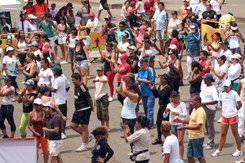Home » Why Cities & Communities?
Why Cities & Communities?City settings, by definition, offer citizens benefits, including access to already established administration, infrastructure, educational and communication systems. Cities are also the ‘houses’ of municipalities and communities, including on a public, voluntary, civic, private and commercial basis. And of course, cities are the homes of active, responsible, individual citizens ready to interact with one another. In the future, the city setting will become even more important, as it is predicted that by 2020, there will be 27 mega cities with a population of over 10 million in the world. By 2030, 65% of the world’s population will live in cities, and by 2050 this number will have grown to 70%. This is an increase of over 200,000 people living in cities everyday! Municipalities are currently the major providers and sponsors of Sport for All and physical activity throughout the world. The majority of programs and initiatives available to citizens come from their local cities and communities; for example the provision of local parks, bike trails, and other public activity spaces, in and after school activities for children, mass activity events and recreational sports competitions. However, there is a general lack of acknowledgement of this unique work, recognition of the positive and constructive impact on citizens and communities, and support and resources for cities to improve their activities. TAFISA is keenly aware of this positive work on behalf of cities and communities, and would like to address the lack of broader recognition of this, and also offer support for cities and communities less developed in the Sport for All area, or who are looking for further development. Challenges for Cities & CommunitiesSport for All and physical activity can play a significant role in combating several critically important challenges. Challenges that might be combated by increased Sport for All and physical activity include:
|




